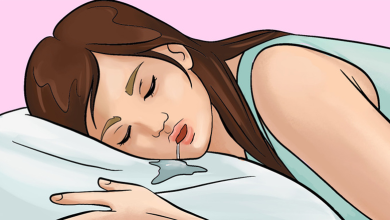Swollen, heavy legs aren’t just uncomfortable — they can point to deeper issues like poor circulation, venous insufficiency, or fluid retention. Rather than relying solely on synthetic medications, many are turning to a potent, natural solution: Horse Chestnut.
Used for centuries in European folk medicine, Horse Chestnut is now backed by modern research as a go-to herbal remedy for leg swelling, varicose veins, and circulatory support. The secret? A natural compound called aescin, known for strengthening veins, reducing inflammation, and improving blood flow.

Why Horse Chestnut Works So Well
1. Strengthens Blood Vessels
Aescin improves the tone and elasticity of veins and capillaries, making them less likely to leak fluid, which leads to swelling.
2. Enhances Circulation
It supports venous return, helping blood move efficiently from the legs back to the heart — especially useful for people who stand or sit for long hours.

3. Reduces Inflammation
Aescin also reduces swelling and inflammation, easing that heavy, achy sensation in your lower limbs.
What It’s Best For
- Chronic venous insufficiency
- Varicose veins
- Leg and ankle swelling from heat or travel
- Hemorrhoids
- Restless or cramping legs at night
- Bruising and skin inflammation

How to Use Horse Chestnut Safely at Home
1. Homemade Horse Chestnut Oil (For External Use Only)
Ingredients:
- 4–5 fresh or dried horse chestnut seeds (crushed)
- 250 ml olive oil (or almond oil)
- Optional: calendula or comfrey for extra soothing
Instructions:
- Crush the seeds with a mortar or food processor.
- Place in a glass jar and cover with oil.
Infuse:
- In sunlight for 1–2 weeks, shaking daily
- Or gently heat using a double boiler for 2–3 hours
- Strain using cheesecloth and store in a dark bottle.
Use:
- Massage into swollen legs, ankles, and varicose veins twice daily.
- For best results, apply before bed with legs elevated for 15–20 minutes.

2. Horse Chestnut Compress
Instructions:
- Simmer crushed seeds or bark in water for 20 minutes.
- Cool until comfortably warm.
- Soak a clean cloth in the liquid, wring out, and apply to swollen areas.
- Wrap with plastic wrap and cover with a towel.
- Leave for 30–40 minutes daily.
3. Ready-Made Horse Chestnut Extract (For Internal Use)
If you prefer internal support, choose a standardized extract from a reputable brand.
Look for:
- 16–20% aescin content
- Suggested dose: 300 mg/day (check product label)
* Safe extract preparations are specially processed to remove toxic components found in raw seeds.

Caution: Don’t Use Horse Chestnut If You…
- Are pregnant or breastfeeding
- Have liver or kidney conditions
- Are taking blood thinners or anticoagulants
- Have a known allergy to horse chestnut
Bonus Tips to Boost Effectiveness
- Elevate your legs regularly
- Stay hydrated to reduce fluid retention
- Avoid standing or sitting too long without movement
- Use compression socks for added support
- Pair with nettle or dandelion tea to aid circulation and lymphatic drainage
Warning Signs You Shouldn’t Ignore
If your leg swelling is:
- Sudden or severe
- Accompanied by pain, warmth, or redness
- Linked to shortness of breath
* Seek immediate medical attention — it could signal deep vein thrombosis or heart-related complications.
Final Thoughts
Horse Chestnut isn’t just a folk remedy — it’s a clinically supported, natural powerhouse for managing leg discomfort and vascular health. With regular use, whether as a massage oil, compress, or standardized extract, it can significantly relieve swelling, reduce the appearance of varicose veins, and improve your overall circulatory wellness.
Sometimes, the most effective solutions are rooted in nature — you just have to know how to use them.
Disclaimer: This guide is for informational purposes only and does not replace professional medical advice. Always consult your healthcare provider before beginning any herbal remedy.







